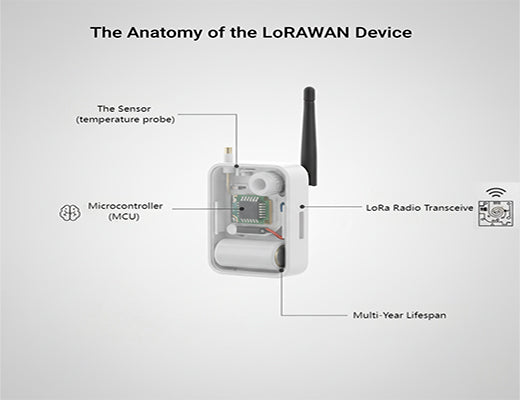
An Introduction to LoRaWAN Devices and Sensors
|
|
Time to read 5 min
|
|
Time to read 5 min
LoRaWAN devices, also known as "end nodes," are the battery-powered sensors and actuators that form the foundation of any LoRaWAN network. This guide provides an introduction to these critical components, explaining their basic anatomy, the crucial differences between device Classes (A, B, and C), and the vast ecosystem of LoRaWAN sensors available for applications ranging from smart agriculture to industrial monitoring.
LoRaWAN devices are the "things" in the Internet of Things, designed for multi-year battery life and the ability to communicate over many kilometers.
They are categorized into Class A, B, and C, which determines their power consumption and responsiveness to commands from the network. Class A is the most power-efficient.
A massive ecosystem of specialized LoRaWAN sensors exists for nearly every industry, including smart buildings, agriculture, utilities, and logistics.
All of these devices require a LoRaWAN gateway to relay their messages to the internet.
I was talking to a facility manager who had just installed a LoRaWAN gateway. He said, "Okay, I have the 'ears' of my network set up. Now, what about the 'voices'?"
That's the perfect way to think about it. If a LoRaWAN gateway is the central listening post, then LoRaWAN devices are the thousands of tiny, tireless reporters whispering critical information from every corner of your operation. They are the true heart of your IoT network, doing the real work of sensing the physical world.
But not all of these "voices" behave the same way. Let's be clear: understanding the different types and classes of LoRaWAN devices is the key to designing a network that is both powerful and incredibly efficient.

This is the most common and power-efficient class.

The ecosystem of LoRaWAN sensors is vast and growing every day. Here are just a few examples of how they're being used:

The incredible variety of LoRaWAN devices and sensors is what makes the technology so versatile and powerful. They are the foundation of your network, collecting the data that drives your business insights.
By understanding the difference between the device classes and choosing the right sensors for your specific application, you can build a powerful, efficient, and long-lasting IoT network that solves real-world problems.
Learn more in our main guide:
A1: This depends heavily on the device class, how much data it sends, and how often it transmits (the "spreading factor"). However, for a typical Class A device that sends a small data packet a few times a day, operational lifespans of 5 to 10 years on a single battery are common and achievable.
A2: The payload is the actual, useful data from the sensor that is sent inside a LoRaWAN message. To conserve power and airtime, this data is usually encoded into a very small, compact binary format. For example, a temperature reading of 25.5°C might be encoded into just two bytes. The application server is responsible for decoding this payload back into a human-readable format.
A3: Yes, absolutely. For developers and OEMs with unique needs, there are many development kits and standalone LoRaWAN modules available. This allows you to integrate a LoRaWAN radio into your own custom hardware to create a specialized end node for your specific application.